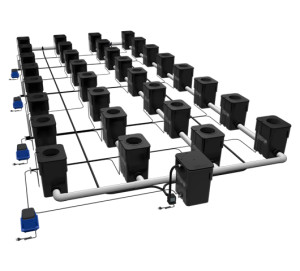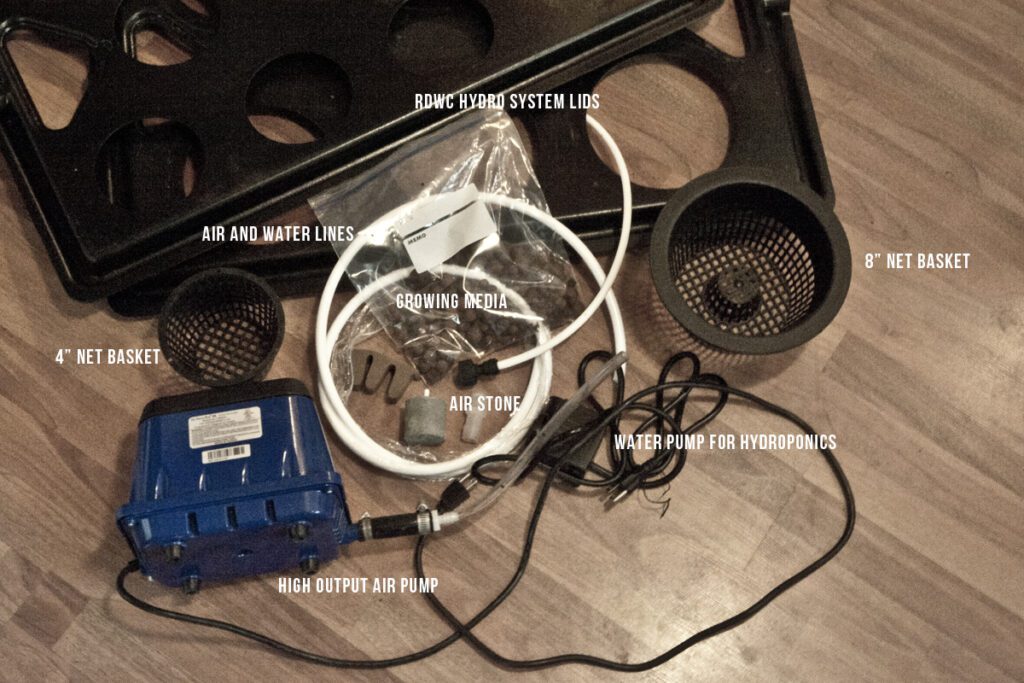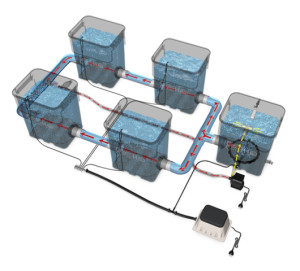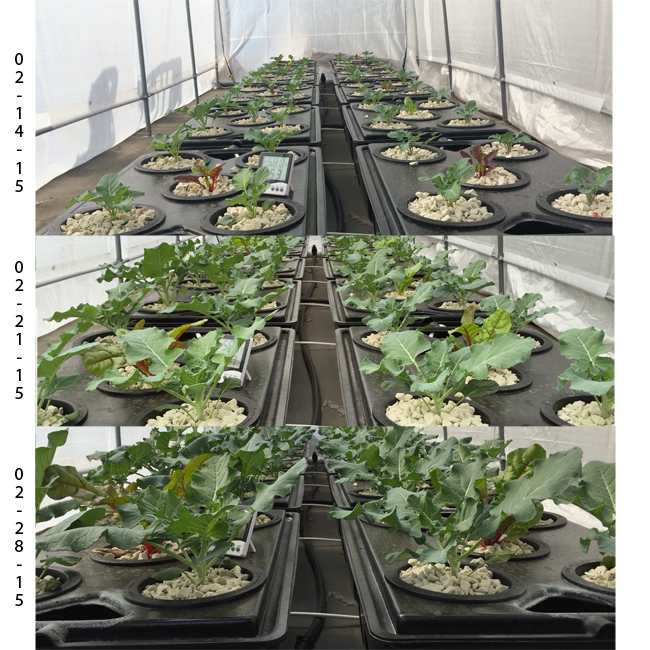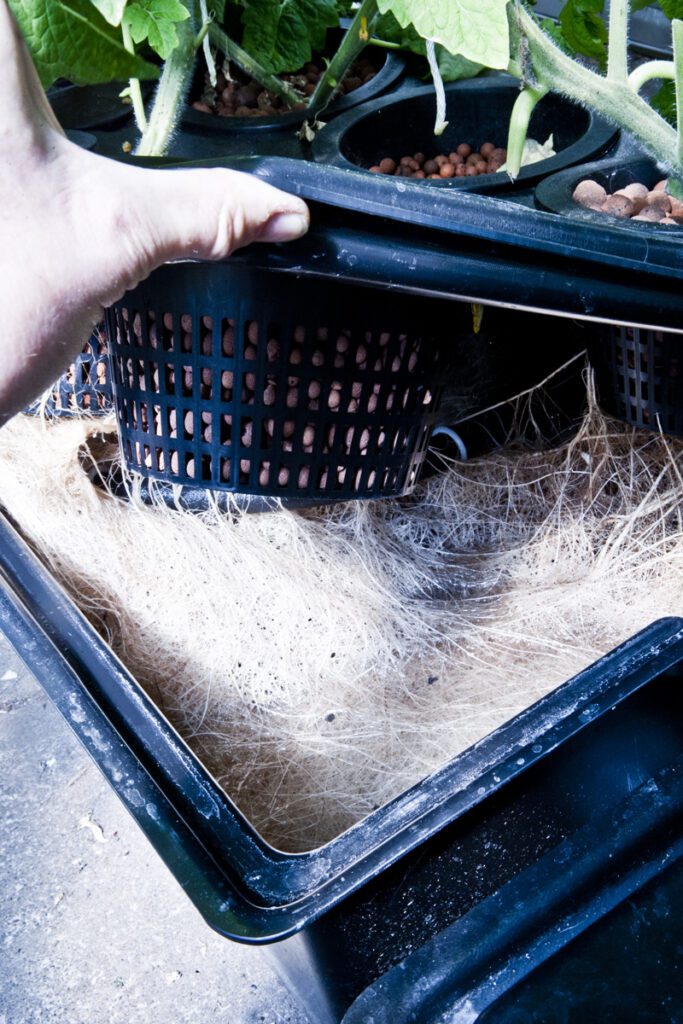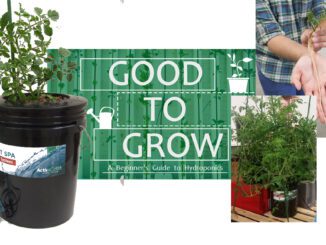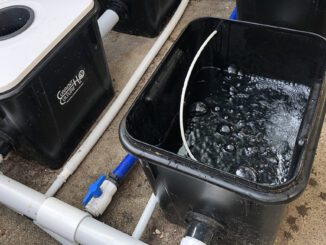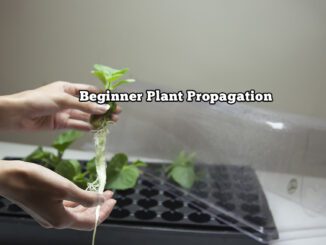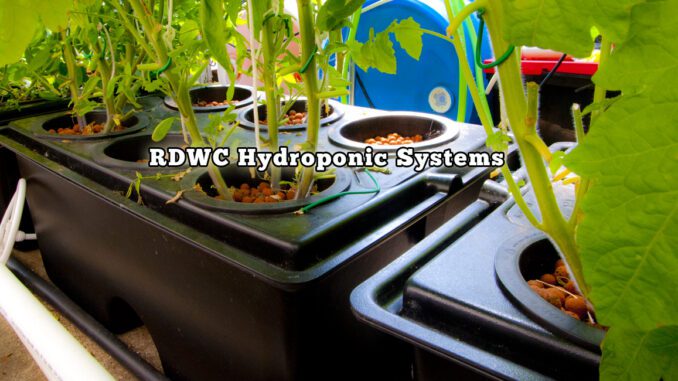
RDWC Hydroponic Systems
Building & Operating Recirculating Deep Water Culture
How To Guide for RDWC Hydroponic Systems.
RDWC hydroponics systems (Recirculating Deep Water Culture) are an improved or “hybrid”way to grow crops versus static DWC (Deep Water Culture Systems). The improvement in plant growth capabilities with RDWC hydroponics, whether in greenhouses or indoors or on the patio garden stems from the fact that more oxygen (O2) can be dissolved into the nutrient solution and the fact the the hydroponic nutrient rich solution flows laterally through the bare plant roots that feed the crops up top. This is achieved by adding a water circulation pump into the equation. Typically, water pumps like mag-drives or submersibles used in hydroponics systems use very little power and are typically reliable, especially if there is a prefilter or inline filter used and use very little power.
Oxygen pumps are the heart of RDWC and DWC hydroponic systems. These also use very little power and offer reliability relative to the great benefits they offer in improving plant health and growth rates. Plants grown in hydroponics, especially RDWC have unburdened access to water, oxygen and plant nutrients. This supercharges growth rates and yield potential. Another benefit is that these systems use considerably less water and fertilizer over the cropping term versus conventional gardening methods.
[youtube width=”560″ height=”315″ video_id=”Jh5IFLYvT3g”]
Above: RDWC Greenhouse Tomatoes
Basic DIY VS Pro RDWC Hydroponic Systems
Basic DIY RDWC:
- fairly inexpensive to build a simple system
- forgiving growing method if constructed properly
- requires some tools
- most home built units are reserved for smaller closet sized or counter top gardens
- for larger plants, more building experience may be required due to practical considerations
Things to Watch Out For:
-leaks can be disaster, don’t build or source materials hastily
-system materials that react with nutrient solution, creating phytotoxic conditions.
-optimal pump (air and circulation) sizing relative to system scale
Pro RDWC Systems:
- requires research and time to pick the right one; time well spent
- professional systems are turn-key, meaning you can assemble and get to growing right away
- can be supplied for a variety of plant spacings by swapping out lids
- no tools like hammer drills and hole saws required by the grower
- backed by expert support when sourced from reputable dealers and manufacturers
Things to Watch Out For:
-poorly constructed systems supplied with lower quality materials; ie “cloned” copies not designed by real growers
-“quick buy” situations winding up with the wrong system configuration and sizing
-no after purchase support; if they don’t respond to your emails or calls before you buy, take note
RDWC Hydroponic Systems Parts:
Air Pump, very important to get the right output relative to the volume of nutrient solution in your system. Deep water has some force to it when the airstones or airhouse are at the bottom of the weight of it all. Make sure your air pumps for hydroponics have enough push to them. Good aeration makes a big difference in RDWC and DWC hydroponics. Supercharged oxygen levels at the right temperature (65-72 Deg F for most plants) produce amazing results, often with plant showing super growth rates at much lower fertilizer levels required. Approximately 1.0L of air per minute per 4.0L of solution volume helps put growth rates into the “supercharged” growth bandwidth. Good airpumps for hydroponics are reliable, stay cool, are quiet relative to output and use little electricity. A regenerative blower is best for more serious or bigger jobs.
Water Pump, can be submersible or inline. Water pumps for hydroponics like RDWC may heat up the nutrient solution slightly. In winter months, this may be welcome although in summer it is typically not. Getting the right sized water pump to circulate the solution adequately is important; a single high quality pump can recirculate a lot of nutrient solution, linking multiple RDWC units together.
Air Stones or Air Hose, are used to distribute and diffuse air into the root zone from the air pump. Ones intended for salt water use are recommended. For larger installations a manifold will be required to distribute air from a single larger pump to a number of independent RDWC hydroponic systems.
Hydroponic Growing Media, usually you don’t need much on a per plant basis versus conventional gardening. Materials like LECA (expanded clay) GrowStones or even Aquarium Gravel are good choices. They will not react with the nutrient solution and can be reused near indefinitely with proper cleaning between crops.
Hydroponic Plant Supports, purpose made net baskets work great and can also be reused over and over again when cleaned between crops. They come in a variety of sizes with 3-1/2″, 6″ and 8″ diameters being most common. If you are building your own system, it can be a task to get the right sized hole for the basket support in the lid of your RDWC hydroponic systems. The idea is to keep it light tight and prevent the plant support from pushing right through once plant get heavy.
More INFO for PROFESSIONAL RDWC Hydroponic Systems & Grow Tips | Click HERE |
FAQs for RDWC Hydroponics:
What Can You Grow in RDWC Hydroponic Systems?
A very wide variety of crops. Just about any plant that loves to drink up water readily (most plants) will thrive in RDWC systems. While commercial growers will likely want ot keep it all to one variety in the same system to optimize nutrients for crop feeding needs, gardeners looking to grow a wider variety of plants, ie a garden veggies will love the benefits of a larger sized RDWC. The RDWC hydroponic system fertilizer can be very mild with great results when high levels of aeration and circulation are achieved.
[youtube width=”560″ height=”315″ video_id=”aZT1FIDGy2Y”]
Above: A Wide variety of crops thriving in RDWC Hydroponics–wait for the tomato roots; mind blowing!
Are RDWC Hydroponic Systems Difficult to Build or Operate?
If you are new to hydroponics and want to get started on learning without spending much money, try a small counter top DWC system first-they are easy to build. Once you get the hang of it, moving up to a Recirculating version will be easier. Overall, either system is easy to operate, but when it comes to choosing the right set up, especially on a larger scale, you’ll want to seek out the professionals who can work with you. Working with professional suppliers doesn’t mean it’s going to cost you more, often the reverse is true: they have done this a thousand times and know how to do it right. They know how to trim the fat, so to speak, in order to save you money both on the initial purchase and for the long run. Often you can buy the basic parts, and follow their advice to plumb it together from locally sourced materials to save on things like shipping, if applicable.
What Kinds of Fertilizers Can I Use in RDWC Hydroponic Systems?
Typically, using synthetic fertilizer materials is preferred. Don’t get the wrong impression, because specialty hydroponic fertilizers from reputable companies are uber clean–the ingredients are often pharmaceutical or food grade, meaning there are very low amounts of impurities. In some instances, they can contain much less in the way of unwanted materials than common organic fertilizers.
While there are a few growers who operate RDWC hydroponic systems using organic fertilizers, there are some that have been able to make it happen–ultimately, this is a Holy Grail of sorts. The thing that makes it challenging is organic materials and oxygen react, creating a compost like soup of sorts. The nutrient chemistry and pH are often unstable like this, sending the crop for a roller coaster ride. Risk of contamination or unwanted pathogens developing in warm wet conditions can also welcome crop diseases, especially in the root zone
It is entirely possible to incorporate Aquaponics growing methods into RDWC hydroponic systems with success. A lot of folks think this might be even better than organic grown food in all respects because it offers a high level of sustainability, and quite frankly, when done right plant yields and health are awesome.
RDWC Hydroponic Systems Growth Rates (Broccoli, courtesy of CCH2O.com)
Other Practical Considerations for RDWC Hydroponic Systems Growing:
- temperature, prevent overheating of the system in direct light.
- pH testing and adjustments, can be basic with a simple and inexpensive kit or can be made automatic at more expense
- water & nutrient level top ups, best done with a simple float valve (cheap) or at least once daily via grower and hose or bucket
- nutrient concentration monitoring, if you can do this you can run the same solution for much longer through management and informed decisions
- nutrient chiller, while not for a modest start up system, if you grow bigger scale these actually save quite a bit on cooling costs
- heating, usually not an issue, but in some instances you may need to heat up the solution, and aquarium heaters work great for this

